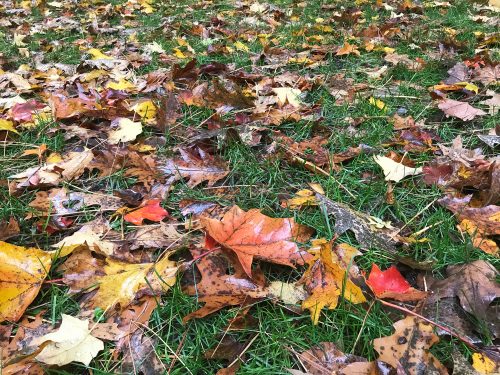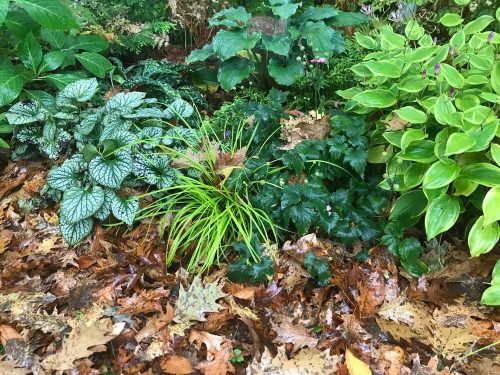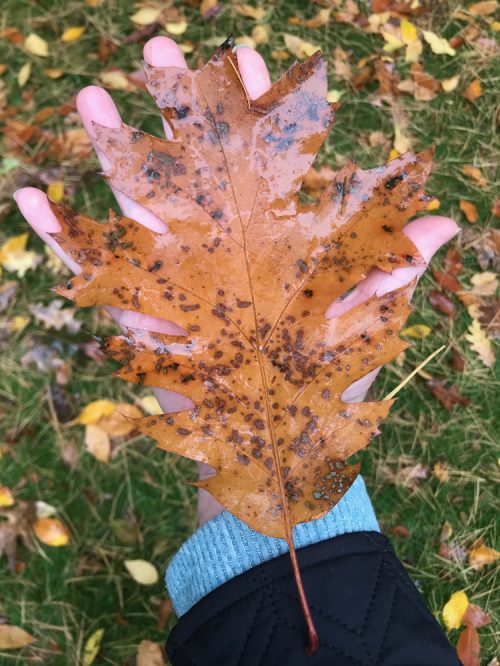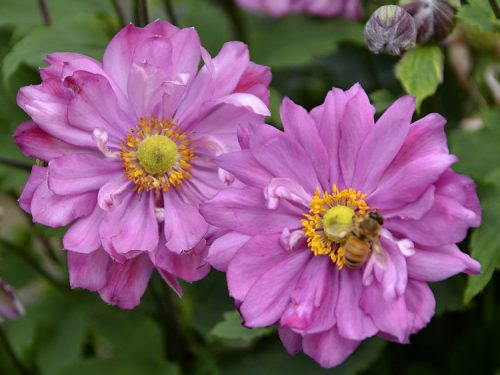The idea of not doing the work of raking leaves in the fall is certainly tempting, but will your landscape be better off if you leave the leaves? We looked to some qualified experts to find the answers.
If it works in the forest, why won’t it work for my garden?
If you take a walk in the woods in the fall, you will find a thick, wet blanket of rich red, orange, gold and brown leaves blanketing the forest floor. In some places, the layers are so thick that you could peel them back in one giant sheet. If you did, you would notice that there aren’t many other plants growing under the trees. That is not only because of the dense shade they cast—it is also because the thick blanket of leaves deprives the soil of oxygen. The same would happen if you never raked the leaves in your landscape.

In places where you want to grow turf grass, it is essential to rake, mow or mulch the leaves in fall. Leaving the leaves intact will smother your lawn and encourage fungal diseases. Studies have shown that it can be extremely beneficial to the health of your lawn to mulch the leaves right into it. Doing so increases the nutrient levels in the soil and also has the long-term effect of weed suppression. Here’s a great video on how that works from the Michigan State University Extension and a helpful article from the Garden Professors at Washington State University.
In forests, there is no worry about clogging storm drains or creating a slip hazard on walkways. At our homes, these are things we need to consider when deciding whether or not to leave the leaves. A wet, matted layer of leaves on a sidewalk or driveway is slippery and becomes even more of a hazard as freezing temperatures set in. Raking leaves away from storm drains is also a good idea to keep the system functioning properly.

Do I need to rake the leaves out of my garden beds?
Just as a thick layer of unshredded leaves can suffocate your lawn, it can have the same effect in your garden beds. This is especially true for beds where you are growing smaller plants that will be totally covered by the fallen leaves and spring bulbs that will have a hard time emerging.
Instead, rake or blow the leaves out of your garden beds, mulch them with your mower, and lay them back into the beds as winter mulch around your plants. Using a mower with a bagging attachment is a fast and easy way to shred and collect the leaves. By spring, they will have mostly decomposed, adding their valuable nutrients back into the soil.
Jean English of the Maine Organic Farmers and Gardeners Association advises, “Leaves that drop in the fall can supply all the nutrients needed in a vegetable garden. They’ll even supply a wider range of essential nutrients than a bag of 10-10-10 synthetic fertilizer because tree roots draw over a dozen kinds of nutrients up from the soil and deposit them in the leaves.”
Shredded leaves should be tilled into the vegetable garden in the fall to give them adequate time to break down before the spring planting season arrives. English also suggests laying a three to six-inch layer of shredded leaves as mulch around perennials, trees and shrubs in the fall.
Texas A&M University Agrilife Extension office suggests using shredded leaves as a soil amendment for heavy clay and sandy soils. A six to eight-inch layer of shredded leaves can be tilled into clay soil to improve the drainage, and into sandy soil to improve moisture and nutrient retention.

Won’t shredded oak leaves make my soil acidic?
One common myth around mulching leaves into your lawn or adding shredded leaves to your garden beds is that oak leaves will turn the soil too acidic. This is not actually true. Horticulturist Larry Hodgson reports that, “If you analyze the soil under large oaks where their own leaves have been allowed to decompose for decades, you’ll find it to be acidic, neutral or alkaline, depending on the pH (acidity level) of the underlying rock. Even after 100 years of superimposed layers of oak leaves, they will have had almost no influence on the acidity of the soil.” Though oak leaves do contain some acidity initially, it breaks down as the leaves compose. By the end of the process, the decomposed leaf fragments are only slightly acidic or even alkaline.

Will raking hurt the pollinators?
Perhaps the biggest concern some gardeners have about raking their leaves in fall is the removal of pollinators and beneficial insects. This concern has been amplified by non-scientific information spread around in social media memes. While it is certainly possible that fallen leaves can provide shelter for beneficial insects, at the same time they can be harboring pests and diseases. What can happen when people do not clean up their leaves in fall is that pest populations significantly increase the following summer, which leads to more chemical use to control them. That, of course, defeats the purpose of leaving the leaves.
Instead, consider leaving some parts of your yard in its natural state, without lawn or ornamental plants to be concerned about cutting or raking. If that’s not possible, consider mulching the leaves only from your lawn where it is less likely that beneficial insects will be overwintering, and leaving some of the leaves in your garden beds. Consider that 70% of bee species live in underground hives that won’t be disturbed if you rake your leaves.
As you are deciding whether or not to leave the leaves this fall, consider all of your options. Think about what’s best for your plants and the environment before you head out to rake and make a plan that works best for you.
